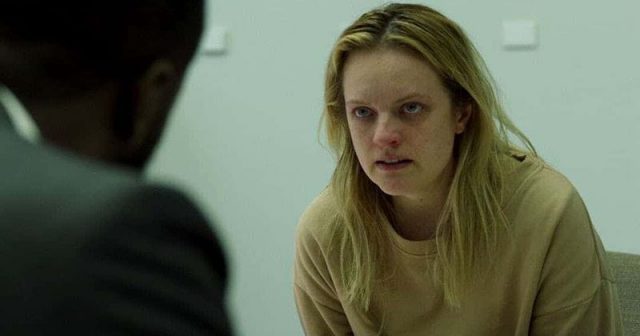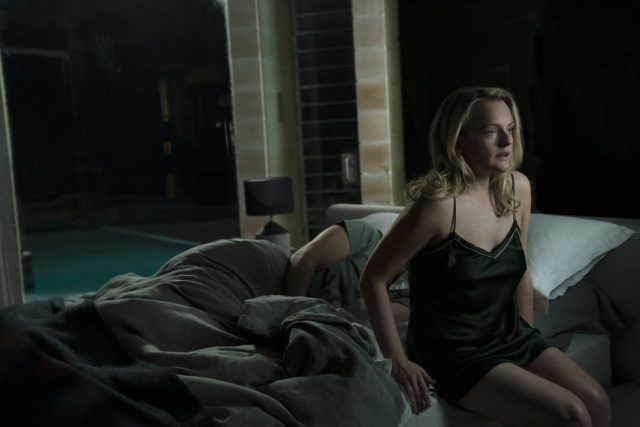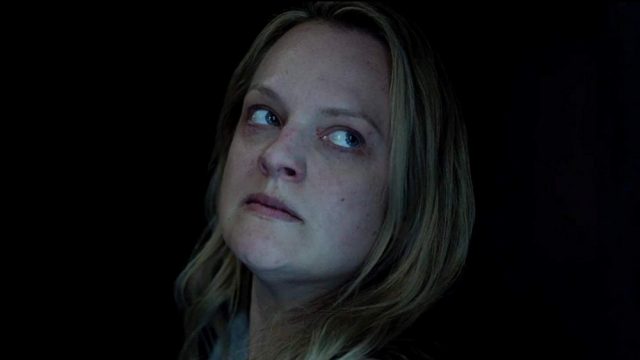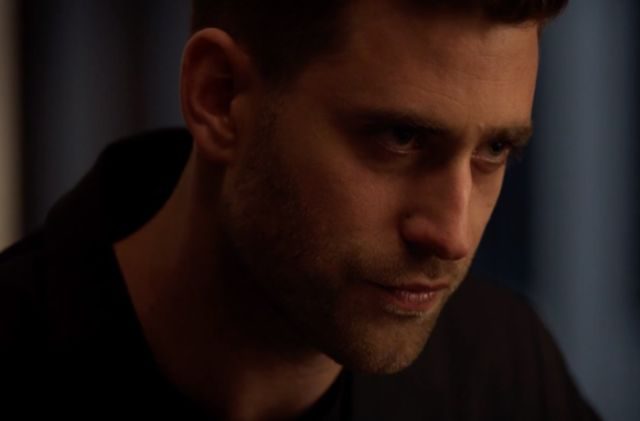Back in 2017, Universal attempted to launch (or, more accurately, re-launch) their own shared universe of cinematic horror icons, the Dark Universe, which would be a shared continuity through which Universal’s so-called ‘Universal Monsters’ franchises could all operate in together. The first and only attempt to develop the Dark Universe was 2017’s reboot of The Mummy, a movie that was detested by critics and fans, and was a box office flop on top of that, pretty much rendering the Dark Universe stillborn right out of the gate. Despite The Mummy’s failure however, the Dark Universe had already begun developing future projects, with the next Universal Monsters reboots on the list being for Bride of Frankenstein and The Invisible Man. Bride of Frankenstein remains shelved at this point, but The Invisible Man ended up taking on new life as a standalone project for fan-favourite horror studio, Blumhouse Productions, more or less arriving within the same approximate release window that its former Dark Universe incarnation likely would have inhabited.
Now free of being connected to a shared universe, and able to go all in on its horror elements, this year’s reboot of The Invisible Man thus re-imagines both H.G. Wells’ 1897 source novel, and Universal’s often unpredictable Invisible Man film franchise that sprung from it, placing their story hook within a stark, uncomfortable modern commentary on abuse, gaslighting and emotional dominance in toxic romantic relationships. This is a horror reboot that clearly has something to say, one that could just as accurately be labeled as a psychological thriller, moving its title character to a firmly villainous role, and instead placing the narrative focus on an all-new female protagonist, namely the longtime girlfriend and victim of the titular horror icon in this modern continuity.

Make no mistake however– Just because The Invisible Man has social commentary doesn’t mean it’s not gripping, and often outright terrifying! This new cinematic take on the property may in fact be one of the best adaptations of The Invisible Man that Universal has delivered to date in fact, successfully bringing the story foundation behind H.G. Wells’ original novel into the modern era, without compromising the suspense and horror that has come to define its original adaptations on the big screen. This back-to-basics approach blends very well with the new protagonist and shifted subject matter, creating the kind of disturbing suspense opus that stands a legitimate chance of keeping viewers up at night, and just a little more wary of open spaces than they were the day before seeing it.
2020’s reboot of The Invisible Man stars Elisabeth Moss as Cecilia Kass, an architect and longtime boyfriend to Adrian Griffin, played by Oliver Jackson-Cohen, a brilliant, but emotionally and physically abusive optics genius. After conspiring with her sister to sneak away from Griffin (in one of the most intensely hair-raising intro sequences that any movie has delivered in recent years!), Cecilia then learns that her former boyfriend committed suicide in the short time since, leaving Cecilia a healthy sum of money in his will, on the condition that she doesn’t break the law, and is mentally competent. Things finally seem to be turning around for Cecilia after she then moves in with a friend, Aldis Hodge’s police detective, James Lanier, and his daughter, Storm Reid’s Sydney Lanier, but after misfortune, violence and confusion begin to routinely occur wherever Cecilia goes, Cecilia soon becomes convinced that Griffin is very much alive, and has simply found a new way to abuse and torment her.

One of the scariest elements behind The Invisible Man is how effectively it comes from a real, disturbingly relatable place of relationship abuse and gaslighting. Cecilia’s friends and family act as pretty much anyone would when Cecilia tries to desperately convince them that she’s being stalked, harassed and framed by someone that’s invisible, namely by dismissing it as the ravings of a traumatized head case. This makes the first two acts of the movie as heartbreaking as they are horrifying, since viewers obviously know that Cecilia is correct in her assumptions about the supposedly dead Griffin. After all, it wouldn’t be much of an Invisible Man movie without the actual Invisible Man, would it?
Despite Griffin being the title character however, this movie pretty much entirely unfolds from Cecilia’s perspective, as a victim who finds no real solace in her loved ones, and must instead learn to fight back on her own terms. Cecilia’s character journey is easily able to sustain this movie’s fairly beefy runtime on its own too, beginning with Cecilia being completely victimized and helpless, before she eventually evolves into a character that’s pushed into being more hardened, resourceful and ruthless in her attempts to stop her unseen stalker. Griffin himself, by contrast, is portrayed as more of a force of nature, an allegory for domestic violence and manipulation, than a truly believable person. This practically supernatural deviousness and relentlessness however makes Griffin feel like a genuine, well, monster, even in a movie that’s otherwise very human and grounded in tone. Cecilia’s efforts to outlast and conquer the trauma that continues to spawn from that monster is an effectively worthy character evolution as much as it is an unyielding gauntlet of sheer psychological horror as well.
Despite still branching significantly from the events of its source novel, particularly due to its modern setting, 2020’s The Invisible Man reboot nonetheless tosses out Universal’s increasingly convoluted, genre-bending mythology behind the franchise’s former movies, and instead completely reboots the story within a standalone present-day universe, one where the rest of the familiar Universal Monsters don’t exist, and the previous Invisible Man movies didn’t happen. This naturally means that The Invisible Man is now removed from Universal’s seemingly aborted ‘Dark Universe’ plans, and doesn’t outwardly strive to lend itself to a new franchise, instead going all in on telling one tightly-realized, well-executed story that re-frames a very old cinematic property for a new, modern audience.

The Invisible Man never indulges in cheap scares or tired horror cliches either, with its twists being clever, its characters being grounded and reasonable people (at least beyond the villainous Invisible Man himself), and its tone feeling surprisingly down-to-earth. In fact, the worst you can say about the movie overall is that its plotline does occasionally require some suspension of disbelief, not just because it surrounds a menacing vendetta from an invisible sociopath, but also because Griffin’s supernatural inability to remain undetected, even through sound, smell and crowds, is sometimes a little hard to swallow. Likewise, some of the forensics behind Griffin’s handful of more violent acts don’t feel like they hold up to scrutiny, with Cecilia being blamed not because it truly makes sense, but because it’s convenient to move the storyline forward.
Outside of a few lapses in logic however, The Invisible Man is thoroughly on-point with its emotionally uncomfortable and psychologically distressing plot progression. The gaslighting act may eventually give way to a more amped-up action focus towards the climax, but The Invisible Man is always careful to earn its thrills, never seizing them with cheap tricks, and always building up to them with heaps of tension. The first two thirds of this movie in particular absolutely ooze with delectably agonizing suspense, delivering a slow burn pace that nonetheless makes the two-hour runtime fly right by, thanks to impeccably gripping drama and scares that will effortlessly leave viewers clinging to the edge of their seats.
The Invisible Man is both written and directed by Leigh Whannell, who is best known as the co-creator of the Saw franchise, and the creator of the Insidious franchise, on top of having written many of the early movies from both of those franchises, and even directing the third Insidious movie from his own script. Whannell also turned heads in 2018 with his highly underrated sci-fi horror movie, Upgrade, and that’s the gig that seemingly led to Whannell being entrusted with Universal’s The Invisible Man franchise. This is a very smart decision on Universal’s part as well, since Whannell is a filmmaker that has delivered some truly outstanding movies on shoestring budgets, and while this year’s reboot of The Invisible Man is one of the higher-budgeted movies that Whannell has been involved with, it was still made for less than $10 million.

Sure, it definitely helps that the main threat of The Invisible Man is obviously invisible, meaning that many scenes incorporating the eponymous antagonist can be done without an actor actually being present, and Whannell’s camera direction instead panning out and framing shots as if someone is actually there, hiding in the empty space. This is both a brilliant way to save on funding, and also an effective way to create the impression that this movie’s villain is frequently somewhere in the same proximity as the other characters, silently stalking Cecilia in particular, no matter where she goes. It’s an inspired form of audience trickery, one that further lends to the idea that this movie’s villain could be hiding anywhere, despite the fact that he’s always nearby, simply being unseen by the characters in most instances.
Even towards the third act however, where this movie gains a faster pace, and the jig is inevitably up with the Invisible Man’s stalking and gaslighting of Cecilia, Whannell’s direction still holds up well, building on the prior uneasiness to create a crescendo of pulse-pounding terror, as Cecilia’s struggle to survive officially reaches a boiling point. The violence in this movie is astonishingly rare, and the miniscule gore is never over-the-top, but there’s a surgical precision to the Invisible Man’s torments that manages to make him even more scary, simply because he could strike at any moment, but often chooses not to. Every moment of surprise, fear and violence is effectively earned throughout The Invisible Man, with audiences easily being able to be caught off-guard by some very well-executed visual and auditory misdirection, which never allows this razor-sharp reboot to sink into a complacent groove.
Easily one of the best elements of 2020’s The Invisible Man is how brilliantly it makes use of sound. This is a movie that I highly recommend checking out in premium formats like IMAX or UltraAVX, where the sharp, overwhelming and sinister sound cues are at their most powerful, seizing the attention of audiences and never letting go. Benjamin Wallfisch’s unnerving musical score further complements the outstanding sound design, delivering unpredictable, sometimes downright alien composition styles that easily make you feel like you’re experiencing something unnatural, and uncomfortable. Wallfisch has truly outdone himself with this soundtrack, injecting a ton of shady, unnerving atmosphere into the movie, which stands out all the more with premium theatre speakers.

The rest of the sound design throughout The Invisible Man is truly excellent too, presenting a few well-executed jump scares, but never leaning on them as a crutch. Not only that, but the almost supernatural silence of the titular villain is captured incredibly well in every scene, with viewers constantly guessing as to where he may be hiding, and eagerly listening for any clues that may give him away, even for just a split second. Even mundane sounds like cellphones vibrating on hard surfaces will threaten to shatter your nerves at the best of times, as a sociopath that could be hiding anywhere almost appears to take form everywhere, leaving an unsettling, but addictive panic in the pits of viewers’ stomachs. The horror genre is frequently dependent on great sound to really maximize its appeal, and this year’s reboot of The Invisible Man is truly a master stroke in terms of how to use sound to maximize both dread and atmosphere, even on a paltry budget.
The Invisible Man’s microscopic $7 million budget means that its visual effects suite is not terribly detailed, but it delivers what it needs to deliver. Obviously, most of the effects budget is spent on the rendering, or lack thereof, behind the titular character, whose invisibility is given a more modern, semi-plausible explanation in this reboot, in contrast to the more fantastical explanation that was previously presented in Wells’ original novel, and Universal’s prior Invisible Man movies. The occasional CGI that’s used for the Invisible Man himself is primitive and looks very alien, but if anything, that only makes the terror behind the Invisible Man’s sudden revelations land with all the more effectiveness. These moments work even better when The Invisible Man is so surprisingly restrained with its violence as well, particularly in the first two acts, helping to create a grounded tone that nicely complements the social commentary, while in turn making its lead protagonist feel even more exposed and vulnerable.
Rebooting a long-running, considerably aged movie property can often be a big gamble, but The Invisible Man’s bold creative risks pay off immensely, modernizing this formerly archaic Universal franchise with tons of scary, impactful appeal. If ever you needed a decisive argument that Universal’s attempted ‘Dark Universe’ canon is better off dead, it’s this movie. Blumhouse has taken The Invisible Man back to the drawing board, placing it in a modern world that’s completely separate from the realms of other so-called ‘Universal Monsters’, and in the process, they’ve refreshed and rejuvenated the Invisible Man property better than any flashy, expensive blockbuster effort likely ever could.
Despite how effectively, memorably terrifying it is however, The Invisible Man manages to go one step further by grounding its scares in a place of recognizably human pain and torment, perhaps the kind of pain that some viewers may have experienced themselves at some point in their lives. Even considering its fantastical eponymous threat, The Invisible Man brings to life an intangible real-world trauma, and weaponizes it against its protagonist, in turn creating a horror-driven ordeal that eventually gives way to a story that’s strangely cathartic and sensitive in its final resolution. The Invisible Man’s focus on domestic abuse and gaslighting could have easily turned it into a trashy, exploitative mess, but the restrained and measured hand through which this reboot comes together instead crafts a potent horror/suspense thriller that finds the humanity within a seemingly supernatural terror.

Just when you thought that the Universal Monsters were too mainstream and overdone to be scary anymore (especially after The Wolfman, Dracula and The Mummy all whiffed during the previous decade), this year’s reboot of The Invisible Man excellently proves that these properties’ compelling horror roots remain alive and well in the modern era. The lesson then is that these Universal Monsters franchises don’t need to lean on each other for appeal, and are plenty capable of standing on their own. What’s even better than a modern Invisible Man that dares to craft a story without a shared universe? A modern Invisible Man that’s so creative and well-realized that he doesn’t even need a shared universe to thrive in the first place!

